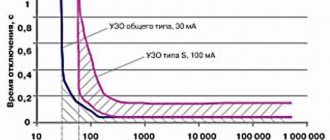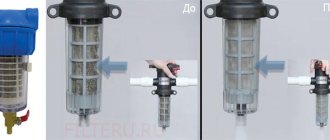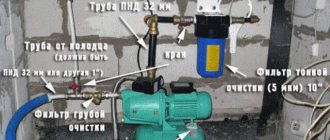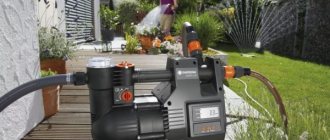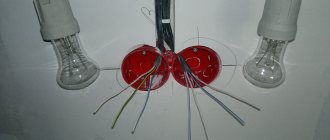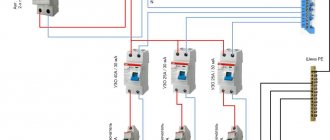The lack of the usual H2O in the water tap is a common everyday nuisance that is simply impossible to get used to. A person is able to adapt to the systematic shutdown of gas or electricity, but it is the lack of drinking liquid that he endures the hardest. Of course, you can collect life-giving moisture in bottles and cans in advance, but this is not a way out. It is much more reasonable to purchase a storage tank for the water supply system and install the container under the water.
Purpose of the water storage tank
The needs of a modern person are not limited to simply the supply of drink to the home. Every consumer of this resource wants H2O to flow from the tap under good pressure and ensure the uninterrupted functioning of household appliances. However, in a number of situations this is only possible if there is a water storage tank.
Installation is usually done:
- If there are no alternative water sources on the homestead territory or nearby. In this situation, a tank that is systematically filled from a tanker truck will be a real salvation.
- When liquid is supplied to residential premises through a centralized water supply system irregularly or in accordance with an established schedule.
- If you have your own well or well with low productivity. In this case, limited resources simply cannot meet all the needs of residents.
- During frequent power outages, without which pumping units are unable to function.
Principle of operation
Let's look at how an electric storage water heater works. Electric storage water heating equipment is distinguished by a special operating principle based on the movement of the hottest water layers upward and the shift of cold water, which has a high density, to the lower part of the tank with heating elements.
The initial connection of a water heating device to the electrical network is accompanied by turning on the heating element and heating the water to a temperature condition at which the thermostat contacts provoke the opening of the electrical circuit.
Operating principle of a water heater
The process of inversion of water heated to the specified parameters into the supply main system is prevented by the installed non-return valve device. It is thanks to the presence of such fittings that the water flow moves in only one direction.
Opening the supply tap at the water point causes hot water to flow to consumers through a special pipe, which is accompanied by a decrease in pressure inside the storage tank. As a result, the water heating tank is filled with cold water from the water supply system.
The presence of a functional divider at the inlet pipe does not allow hot water to mix with the cold water flows entering the water heating tank. The dissecting device distributes the jet and at the same time reduces the speed of its movement. It is for this reason that the flow of cold water is evenly distributed over the very bottom of the water heating device, which allows the installed heating element to carry out effective heating.
In normal mode, a decrease in the temperature of the water in the tank causes the contacts of the thermostat to close and subsequently connect to the electrical network.
Using the Water Tank
To use the reserve supply of H2O at any time, the storage tank must be connected to the water supply. The connection must be carried out taking into account the supply of an aqueous solution in automatic mode (if there is not enough external pressure) or the activation moment must be set using a conventional valve. There are many ways to install water storage devices. To decide on a specific option, you need to take into account the following factors:
- source type;
- probable location;
- living space layout, etc.
In addition, it is advisable to familiarize yourself in advance with the design of different storage tanks for water supply and consider their connection diagrams. Once all the important nuances have been taken into account and the available information has been studied, you can choose the most suitable configuration.
Where else can plastic barrels be used?
They can be used for storing any liquid, granular media - neutral or aggressive, but:
- if the internal pressure in the tank (the product of the density of the stored material by the height of the column and the acceleration of gravity) does not exceed the calculated (declared by the manufacturer) tensile strength values;
- the material is inert to the substance loaded for storage.
Technical information: Thermoplastics of the polyester group, including polyethylene and polypropylene, are completely inert to ammonia, gasoline, acetone, butanol, acetic acid (CH3COOH only), ethyl chlorides, chlorine gas, hydrogen sulfide, mineral oils, propane, etc.
Features of the storage container
The water tank is designed to maintain the required pressure level (the same as an expansion tank). The optimal solution for these purposes is a storage tank with a closed type membrane. Such models are produced with a membrane base located inside. A mesh membrane divides the internal area into two halves. One section is occupied by air, the second by liquid.
Water storage tanks are used in individual systems. Their use is relevant in case of systematic interruptions in the supply of water to the home. The storage tank replenishes it from accumulated reserves. Water storage tanks are produced by manufacturers in a wide range of sizes and volumetric characteristics. Drainage and water supply adapters, filter elements, and ventilation outlets are located on the surface of the housing. There are also models equipped with pumping stations. They already belong to the category of expensive products.
The storage tank simultaneously performs a number of functions:
- stabilizes the pressure level when the supercharger is inactive;
- protects against water hammer occurring due to the penetration of air masses into the water supply system or power surges;
- maintains the set volume of liquid;
- ensures wear resistance of pumps.
What are the advantages of storage capacity?
- The most economical solution for external sewerage in construction.
- Energy independence: wastewater moves by gravity.
- A very simple design, which determines the durability of such a structure.
- The storage tank can be used for both permanent and temporary or seasonal residence.
- Using a storage tank, you can dispose of almost any waste from the inhabitants of the house, including the remains of vegetables, fruits, spoiled food, pet hair, etc.
- Wastewater in a sealed container does not come into contact with the ground in any way, and therefore is guaranteed not to harm the environment.
Types of reserve tanks (water storage tanks) for cold water
In accordance with the technical characteristics and configuration features, water storage tanks are divided into several classes according to:
- Form. They are produced in round, rectangular, cylindrical, and in the form of non-standard models.
- Design differences: closed or open.
- The material from which the tanks are made. The most common are metal, polypropylene, stainless steel, and plastic.
- Volume. Water storage tanks have a capacity from 7 to 500 liters.
- Purpose: for hot water supply, hot water supply, heating systems and irrigation.
- Installation method. Possible vertical or horizontal placement, underground or wall mounting.
Device and diagram for connecting a water storage tank to a water supply system
The liquid level in the storage tank is regulated by built-in level gauges, which are divided into float and electronic versions. The supercharger pumps H2O from the source to the backup storage. The aquatic environment fills the water storage tank to the set value, after which the float valve is activated and the water intake process stops.
When activated, the electric motor of the pump begins to fill the collection compartment of the reservoir. The air space compartment at this moment decreases. A decrease in air volume leads to an increase in pressure. As soon as a certain norm is reached, the injection unit is switched off automatically. It will work again when the atmosphere indicator drops to the minimum level.
MBFT-75 Membrane for 75GPD
SF-mix Clack up to 0.8 m3/h
SF-mix Runxin up to 0.8 m3/h
Safety precautions when operating a water heater
All electrical devices require careful handling and compliance with safety measures. Since the device is connected to an electrical power supply, it represents a special hazard class in which injury from electric current is possible.
Therefore, you should always comply with the following requirements to avoid injury and damage to the device:
- It is forbidden to remove the heater body with the plug plugged into the socket.
- The outlet to which the heater will be connected must be grounded.
- You cannot plug in the tank if there is no water in it. You can check its presence by opening the hot water tap. If it runs, it means the tank is full.
- It is necessary to carry out timely maintenance of the tank: cleaning of scale and other impurities. This will protect it from damage.
Cleaning the water heating device from scale and other impurities
It should be remembered that the most vulnerable elements of heaters are the heating element and the storage tank. They are the ones who are exposed to the greatest loads of aggressive environments.
Nuances of choosing a storage tank
When choosing a suitable water storage tank, focus on the needs of future consumers of the water resource. Determine how many people will use it. Also count the number of water intake facilities in the house or apartment. These include: kitchen taps, showers, various household appliances that consume H2O during operation. Plus, consider the possibility of use by several people at once. So that it doesn’t happen when one family member is washing, and the second cannot wash the dishes at that time.
Purpose
Tanks are used for collecting and storing drinking liquids and other non-aggressive substances that meet the food category. A variety of sizes of water supply storage tanks with and without a pump for water in an apartment allow you to save a sufficient amount of resource. A certain amount of reserves is especially relevant during systematic supply cuts. And also in cases where there is no source on the plot.
Shape and volume
Many who in practice have encountered the purchase of reserve capacity believe that the optimal displacement should be 250 liters. This is exactly the amount of liquid that will be sufficient for mass flow. For example, it will be spent cleaning the house, washing the car, filling the bath. The aqueous solution will constantly move without stagnating. 150 or 200 liters is not enough for this.
However, it is impossible to confidently recommend any specific parameters. The most common but valuable substance - H2O - is consumed differently by everyone. Therefore, when purchasing a storage tank, focus on the needs of your household.
Materials
Manufacturers produce devices of two types: metal and plastic.
The first option is products made of stainless steel, which is impervious to mechanical damage and rust. In this regard, metal models are quite expensive and are often made to order. To avoid the negative effects of corrosion when collecting and storing hot liquid, the tanks are coated on the inside with heat-resistant enamel.
Storage tanks made of plastic are the most practical and common. They are easy to manufacture, light weight and low cost.
What are the disadvantages of storage tanks?
- Only the initial costs of installing the tank will be small. You must be prepared for the constant costs of disposing of sewage using a sewage disposal machine. The cost of calling such a car in the Moscow region ranges from 1500-2000 rubles. depending on the area.
- Storage tanks made of plastic must be anchored to a reinforced concrete slab in an area with a high groundwater level (GWL).
Connection options
You can connect the storage tank to the water supply using two different methods: by placing it at a certain height or by placing it at ground level.
Upper placement is used mainly when there are no household appliances in the living space that are particularly demanding of good pressure. For the minimal needs of household members, such as washing dishes, cleaning the house, hygiene procedures, it is optimal.
The lower location is more efficient. Suitable for residential buildings that have all the amenities familiar to city residents. This type of installation requires mandatory equipment with a pump, since in its absence it will not be possible to obtain the required pressure.
SF-mix manual up to 0.8 m3/h
AMETHYST - 02 M up to 2 cubic meters/day.
Aeration unit AS-1054 VO-90
Main types of breakdowns
Modern manufacturers have learned to create excellent luxury water heating equipment. It uses gas to operate efficiently and rarely fails. However, even the best gas heaters cannot avoid breakdowns. The list of inevitable malfunctions includes:
- water leaks;
- poor heating of the liquid;
- discharge of power elements;
- weak water pressure;
- lack of gas.
Owners of gas boilers can repair some faults themselves. Anyone can change the batteries in the power supply. It is also easy to eliminate weak water pressure - perhaps excess scale has simply formed in the heat exchanger. To remove it, remove the heat exchanger and rinse thoroughly. For these purposes, you can also use special descaling liquids.
It is not difficult to solve the problem of poor water heating on your own. The main reason for such a malfunction is often contamination of the heat exchanger with soot. The solution to this problem is to remove the mentioned element and remove plaque. If more significant problems occur, you should contact a professional.
Water supply schemes with storage
They largely depend on the location and type of source, the process of preparing hot water, as well as the selected pumping system that supplies water to the container.
So, if water is drawn from a 7-8-meter well, it is quite enough to purchase a surface pump. A check valve will need to be installed on the inlet pipe to prevent H2O from escaping.
It will be possible to lift the aqueous solution from a depth of 15-18 meters only with the help of a remote ejector, which must be equipped with a supercharger.
Well, for an artesian well you can’t do without a submersible device.
Centralized water supply
When installing a water storage tank, regardless of the type of connection, you will definitely need a shut-off element. It is this that prevents the stored liquid from escaping back into the water supply.
Upper connection
The storage tank is mounted under the ceiling above the pipeline or in the attic. At the initial stage, it should already have a falling and water intake fitting, as well as a pipe for discharging excess into the sewer.
Next, a coarse filter device, a check valve, a water meter, and a valve are installed. Only after this can a tee be installed that leads the tube to the inlet adapter.
A hose to remove excess H2O is lowered into a sewer pipe or simply taken outside the living space, for example, to a garden or personal plot.
To control the filling level, special float elements are used.
Leading from below
In this case, all manipulations are performed similarly to the previous method. But unlike this, a pumping station is installed at the outlet, creating a certain pressure in the pipeline. To use the liquid, you must first activate the pump.
Bottom connection of storage tank with membrane
When studying water supply schemes with a storage tank for storing water in an apartment, one cannot help but pay attention to this option. You can connect a water storage tank of this type using just one tube connected to the water supply through a tee and valve. The water storage tank must be installed after the cleaning device, water meter and check valve.
Main table dispenser AquaPro 919H/RO (hot and cold water)
Main table dispenser AquaPro 929CH/RO (cooling/heating)
Floor dispenser AquaPro 311 (empty, without cooling)
Autonomous system
Supplying H2O from an individual well or borehole source is extremely simple. It is lifted using a supercharger, the configuration of which depends on the height of the shaft and the depth of water resources.
Water tower
The storage tank is mounted 15-20 meters above the ground on an equipped tower or in the attic. The liquid from the pumping station is sent to a reserve tank, and from it is supplied to the toilet or kitchen in the living area. The necessary pressure is created due to the level difference between the water storage tank and the home tap.
Bottom connection
In this case, the storage tank is installed at the same height as the injection system or no higher than the first floor. Filling is carried out using a pump. The float switch acts as a control element. Optimal scheme for excessive H2O consumption.
Membrane design
Such a storage tank is installed immediately after the supercharger and the shut-off part (valve) through a lower connection.
Using a hydraulic accumulator
This device is designed to ensure the start of the pumping station. Can also be used as a reserve water tank. The more impressive the dimensions of the device, the higher the efficiency. However, the cost increases accordingly. Thanks to good tightness, it keeps the aqueous solution suitable for drinking.
Application of water heater
Installed for heating liquids in residential premises. At the same time it serves as a water storage tank. It is characterized by ease of installation and the ability to obtain heated H2O, regardless of the season.
What are the functions of an expansion tank in a home water supply system
So, first of all, let’s figure out what functions the expansion tank of the plumbing system should cope with.
- Such a tank is a reservoir for accumulating a certain supply of water, ready for use. That is, if for some reason the pumping equipment does not work (a common situation for many villages is power outages), the owners have some water reserve at their disposal.
An expansion tank is always a decent supply of water at the required pressure, sufficient for the operation of many plumbing fixtures.
- By installing such a tank, a stable pressure in the system is achieved, which is necessary for the correct operation of plumbing fixtures and household appliances: up to certain limits - even when the pump is turned off.
- The already mentioned water supply and the pressure created in the system make it possible to minimize the number of starts of pumping equipment. This means that the equipment will last longer.
- Finally, any pump start is always accompanied by a sharp jump in pressure in the system, a water hammer, sometimes reaching 10 atmospheres or more. This does not benefit either the pipes or plumbing fixtures. The expansion tank acts as a damper that absorbs such surges, and they become safe for the system.
An expansion tank is often included in the piping of a direct or indirect heating boiler.
Such a tank can also be installed in the circuit of a storage water heating device (boiler), providing autonomous hot water supply. In this case, a compensation function for the thermal expansion of water is also added to prevent the safety valve from operating too often.
But you should not confuse extended tanks for the plumbing system with those designed for heating circuits. Despite all their external similarities, their performance indicators are completely different. This will be discussed below.
Where are water tanks installed?
The choice of location for storage tanks depends on many factors that must be taken into account when planning installation work.
- You can provide backup water supply to a private home through a storage tank by installing the tank in a utility room under the ceiling.
- Install a water tank in the attic or loft. If necessary, the structure will have to be insulated.
- Place it directly on the floor surface or in the basement. Without a pumping station, of course, such a scheme will not work.
Repair
Small leaks in the tank can be easily repaired on your own. These are typical malfunctions that manifest themselves mainly in the places where the pipes exit and where they connect with the pipes. You won’t need a welding machine, especially for plastic tanks. When eliminating defects yourself, it is recommended to use special putties and adhesives. The nuance is that not every product is suitable for these purposes - we are talking about water, which is also used for drinking and cooking.
When choosing a composition, you need to carefully read the instructions for its use. Experts recommend eliminating leaks in storage tanks using “cold welding”, two-component glue (“Poxypol”) or similar properties. To increase reliability, after applying the first layer, you need to apply a patch (for example, a piece of gauze) to the damaged area and re-process it. Manufacturers always indicate means that can be used to eliminate minor defects in the tank body; you just need to carefully read the instructions.
You need a quality water storage tank. Don’t waste time searching - the website alfatep.ru presents various versions of tanks from well-known manufacturers at factory prices. Our online store also has everything necessary for their installation: pipes, shut-off valves, fittings, sealants. ALFATEP employees will help with calculations of the required tank capacity and recommend the optimal model, advise on the procedure for servicing and repairing the product, and advise which materials should be used. You can ask questions through the “Contacts” option or by phone (calls within the Russian Federation are free). Delivery of containers to the customer is carried out by the company’s representative offices in the regions, in a short time; We work all over Russia. Form of payment – at the client’s choice, it is possible to provide a loan on preferential terms.
Recommendations
When planning to purchase a storage tank and organize its operation in the house, it is worth enlisting the advice of experienced specialists:
- Combine the purchase of a water storage device with the purchase of a filtration device. This way you can get crystal clear drinking liquid. When considering offers on the market, you should pay attention to products. We manufacture and sell water treatment equipment and are ready to help you choose the option that suits you.
- When choosing a water storage tank, do not skimp on quality. If you buy a cheap product, you will probably spend more money on troubleshooting various problems.
- When doing the installation yourself, consider the possibility of dismantling the system for repairs or replacement.
- Be sure to consider grounding to prevent corrosion.
How does an indirect heating boiler work?
Externally, an indirect heating boiler looks like a large tank with a cylindrical shape. And the boiler design itself consists of the following parts:
- boiler body;
- insulation;
- tank made of stainless steel;
- thermometer;
- heat exchanger;
- magnesium anode.
Diagram of a heating system with a direct circuit.
Due to the presence of a layer of insulation between the tank and the body of the boiler itself, the heat loss coefficient is 3-4ºC per day. The thermometer allows you to control the set temperature of the water in the tank. The heat exchanger is a spiral-shaped steel or brass tube, which is located inside the boiler itself. Very often this tube has a complex shape and is located closer to the bottom of the boiler. Manufacturers claim that it is thanks to this fact that it is possible to achieve uniform heating of water throughout the entire container. The magnesium anode is designed to protect the tank from galvanic corrosion. Almost all electrochemical reactions will affect the magnesium anode without affecting other parts of the water heater. Over time, this part of the water heater will have to be replaced as it is subject to constant wear and tear.
Almost all new models of modern boilers have an alternative heat source. Such devices are also called combined. In the summer, when the heating season is over, boilers use either electricity or gas to heat water. There are also models on the market that can heat water using sunlight.


